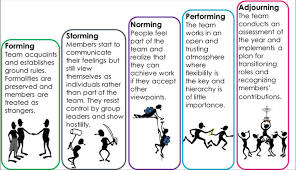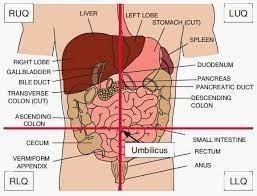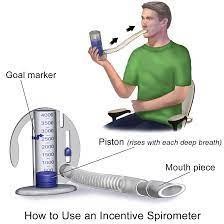Nursing 100 day Proctored Exam 4 (Fundamentals)
ATI Nursing 100 day Proctored Exam 4 (Fundamentals)
Total Questions : 59
Showing 10 questions Sign up for moreThe nurse recognizes that the most appropriate reason to suction a client is that:
Explanation
Choice A rationale: Suctioning is not typically performed as part of routine pulmonary nursing care every eight hours. It is indicated based on the client's clinical need.
Choice B rationale: Suctioning frequency should be determined by the client's condition and physician's orders, not a fixed hourly schedule.
Choice C rationale: Routine coughing and swallowing of sputum do not necessarily warrant suctioning. Suctioning is indicated when the client is unable to manage secretions effectively.
Choice D rationale: Suctioning is appropriate when the client has gurgling respirations and is unable to cough effectively, indicating the need to clear the airway.
A group that has transformed itself from a collection of individuals into a productive, problem-solving highly functioning team would be functioning in which stage of group development?
Explanation
Choice A rationale: Norming is characterized by the development of group cohesion and establishment of norms, not necessarily high-level problem-solving.
Choice B rationale: Storming is marked by conflict and tension within the group, not optimal problem-solving.
Choice C rationale: Forming is the initial stage where members get to know each other; it does not represent a highly functioning team.
Choice D rationale: Performing is the stage where the group is functioning at its highest level, demonstrating effective problem-solving and productivity.

The nurse is aware that a common cause of under delegation in client care is:
Explanation
Choice A rationale: Under-delegation is not related to giving too much responsibility to assistive personnel; it is about appropriate delegation based on the nurse's assessment of the situation.
Choice B rationale: Trust in delegates is essential, and under-delegation is more likely related to a lack of trust or confidence in delegation.
Choice C rationale: Under-delegation can occur due to a nurse's need for perfectionism and control, leading to a reluctance to delegate tasks to others.
Choice D rationale: Nurses often have heavy workloads, and under-delegation may be a result of feeling there is not enough time to delegate effectively.
A nurse is caring for a client being treated for hypernatremia. Which of the following are appropriate nursing interventions? (SELECT ALL THAT APPLY)
Explanation
Choice A rationale: Hypernatremia involves elevated sodium levels, so encouraging potassium-rich foods is not directly related to addressing hypernatremia.
Choice B rationale: Restricting sodium in the diet is appropriate to help manage and reduce hypernatremia. This can prevent further complications of hypernatremia, such as dehydration, confusion, seizures, and coma.
Choice C rationale: This is not an appropriate intervention for hypernatremia, as water intake can help dilute the sodium levels and restore the fluid balance in the body.
Decreasing water intake can worsen the hypernatremia and cause dehydration. Choice D rationale: This is an appropriate intervention for hypernatremia, as high sodium levels can affect the fluid balance and blood pressure in the body. Monitoring
vital signs can help detect any changes or abnormalities that may indicate worsening of the condition or need for further treatment.
Choice E rationale: Monitoring intake and output helps assess fluid balance and response to interventions for hypernatremia.
The nurse has applied a topical agent to the client's skin, and then applies an ice pack to the area. This is done to:
Explanation
Choice A rationale: Applying an ice pack after a topical agent is not primarily for decreasing discomfort but rather to achieve a specific therapeutic effect.
Choice B rationale: Applying an ice pack can slow the absorption of the topical drug, allowing for prolonged local action.
Choice C rationale: Enhancing drug excretion is not typically achieved by applying an ice pack.
Choice D rationale: Maximizing drug distribution is not the primary purpose of applying an ice pack after a topical agent.
A client is admitted to the hospital with a diagnosis of R/O appendicitis. Which abbreviation would describe the location of a client's appendix?
Explanation
Choice A rationale: RLQ (Right Lower Quadrant) is the correct abbreviation for the location of the appendix, which is typically found in the right lower quadrant of the abdomen.
Choice B rationale: RUQ (Right Upper Quadrant) is not the location of the appendix.
Choice C rationale: LUQ (Left Upper Quadrant) is not the location of the appendix.
Choice D rationale: LLQ (Left Lower Quadrant) is not the location of the appendix.

A client must receive eyedrops bilaterally four times a day. The medication should be dropped onto which of the following areas?
Explanation
Choice A rationale: The sclera by the outer canthus is not the typical site for administering eyedrops bilaterally.
Choice B rationale: Dropping medication onto the center of the cornea is not the recommended technique for administering eyedrops.
Choice C rationale: The sclera by the inner canthus is not the usual site for administering eyedrops bilaterally.
Choice D rationale: The lower conjunctival sac is the appropriate area for administering eyedrops, ensuring proper absorption and distribution.
The nurse knows that teaching about the use of the spirometer incentive is effective when the client seals the lips around the mouthpiece and:
Explanation
Choice A rationale: Inhaling slowly to raise the ball to the desired level and attempting to keep the ball raised for several seconds is the correct technique for using an incentive spirometer.
Choice B rationale: Blowing into the mouthpiece with a long slow expiration is not the correct technique for using an incentive spirometer.
Choice C rationale: Beginning breathing with a rapid, forceful inspiration is not the recommended technique for using an incentive spirometer.
Choice D rationale: Exhaling slowly to raise the ball and quickly inhaling is not the correct technique for using an incentive spirometer.

The nurse is administering medications to a client who has severe liver damage. Which medications, as ordered below, will avoid the first pass effect? (SELECT ALL THAT APPLY)
Explanation
Choice A rationale: Acetaminophen 500 mg PO is subject to the first pass effect as it is absorbed through the gastrointestinal system.
Choice B rationale: Dulcolax suppository is not subject to the first pass effect as it is administered rectally.
Choice C rationale: Aspirin 10 mg PO is subject to the first pass effect as it is absorbed through the gastrointestinal system.
Choice D rationale: Fentanyl 25 mcg/h via transdermal patch avoids the first pass effect as it is absorbed through the skin.
Choice E rationale: Morphine 0.4 mg IV avoids the first pass effect as it is administered intravenously.
Which nursing action is most helpful in thinning a client's thick respiratory secretions?
Explanation
Choice A rationale: Maintaining continuous oxygen therapy does not directly address the thinning of respiratory secretions.
Choice B rationale: Maintaining a consistent air temperature in the client's room is not directly related to thinning respiratory secretions.
Choice C rationale: Keeping the client in a supine position as much as possible is not the most helpful action for thinning respiratory secretions.
Choice D rationale: Assisting the client to maintain an adequate fluid intake is the most helpful action in thinning respiratory secretions, promoting hydration and mobilization of secretions.
You just viewed 10 questions out of the 59 questions on the ATI Nursing 100 day Proctored Exam 4 (Fundamentals) Exam. Subscribe to our Premium Package to obtain access on all the questions and have unlimited access on all Exams. Subscribe Now



